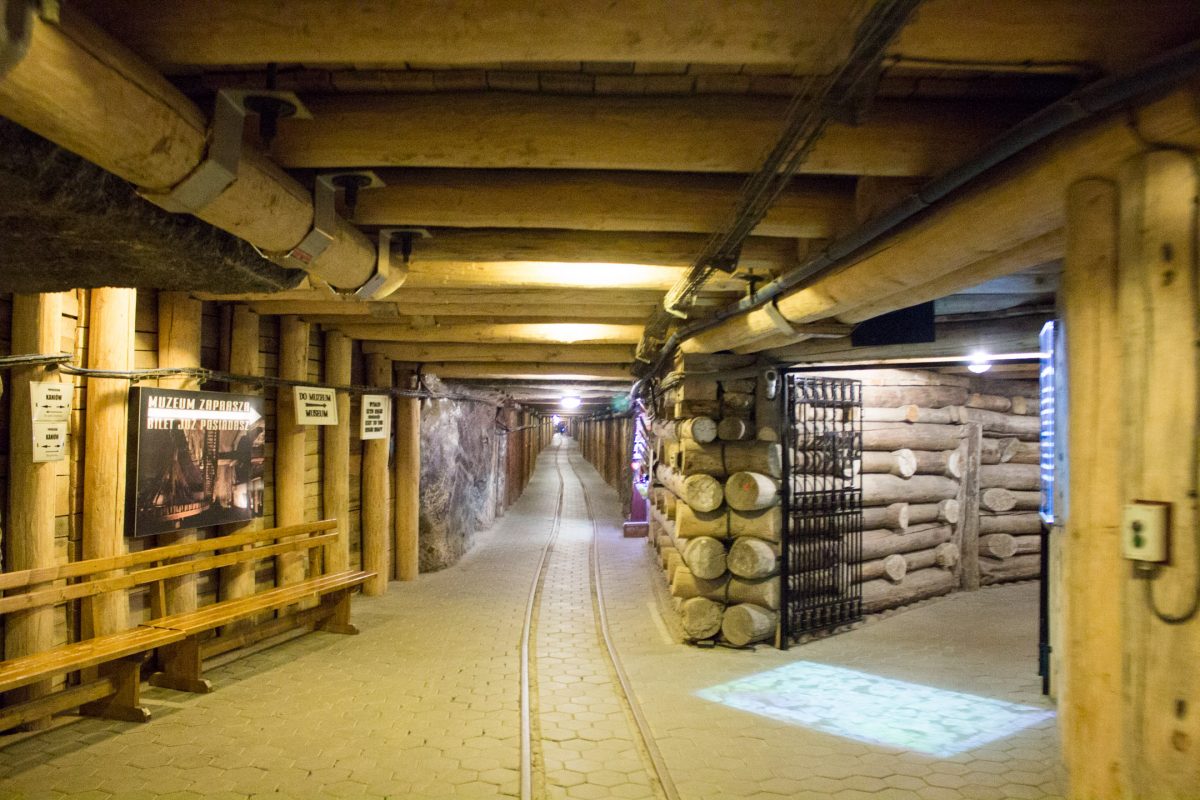You’ve already read what we did on the afternoon of our final day in Poland; now it’s time to hear about what we did that morning. And yes, that is out of order, which I normally don’t do, but I wanted to save the best for last.1 This being me, “the best” is defined as “a cool underground thing.” More specifically, a salt mine – the Wieliczka Salt Mine.

Above ground, it looks more like a kitschy museum-theme-park kind of thing with a bit of adjoining parkland than a functional mine.2
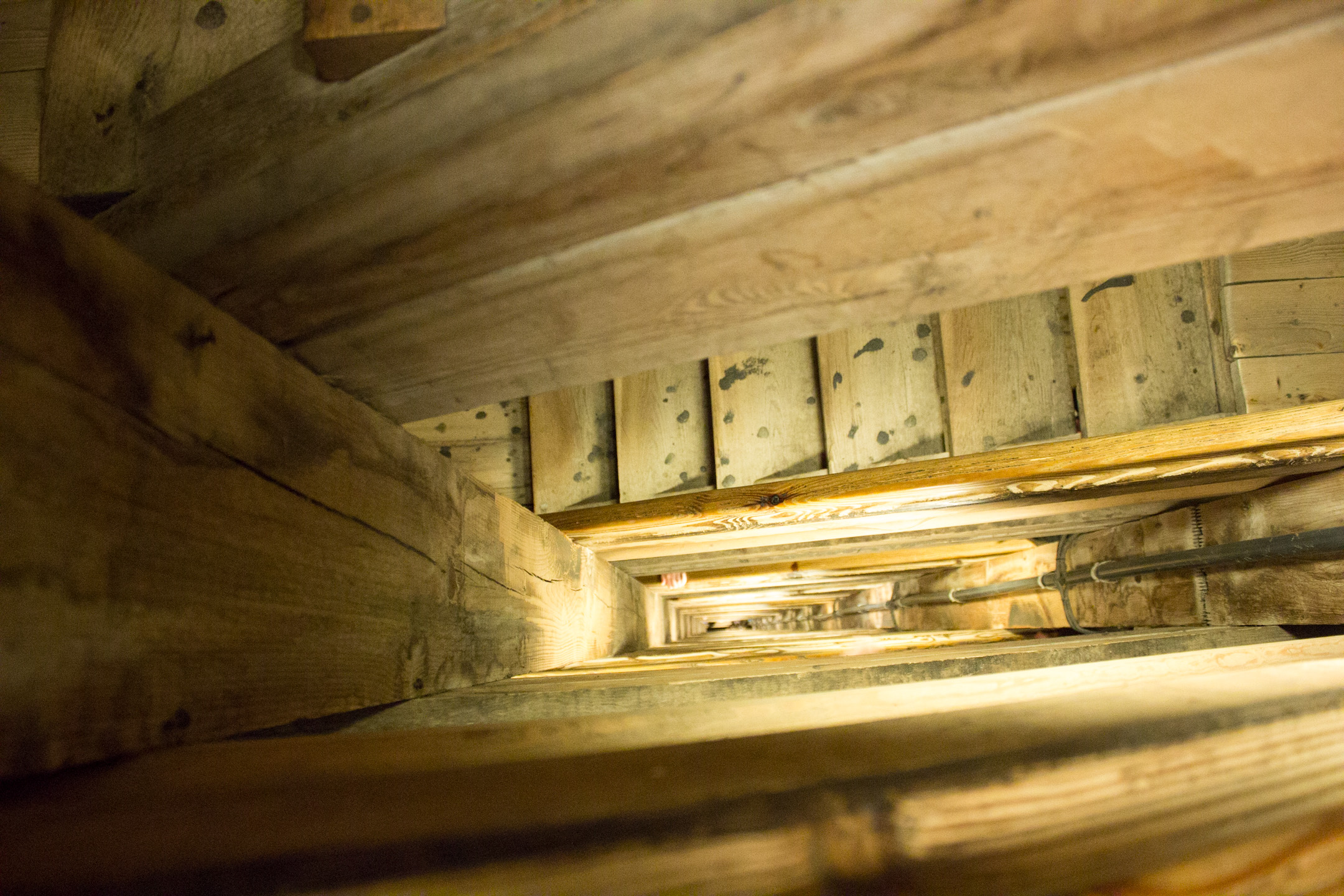
Go inside, though, and you’ll find the top of a very long staircase. That staircase won’t take you all the way down – it goes as far as Level 13 of the mine, and then is blocked off.4

Throughout the mine are chambers converted into museum exhibits of a sort.5
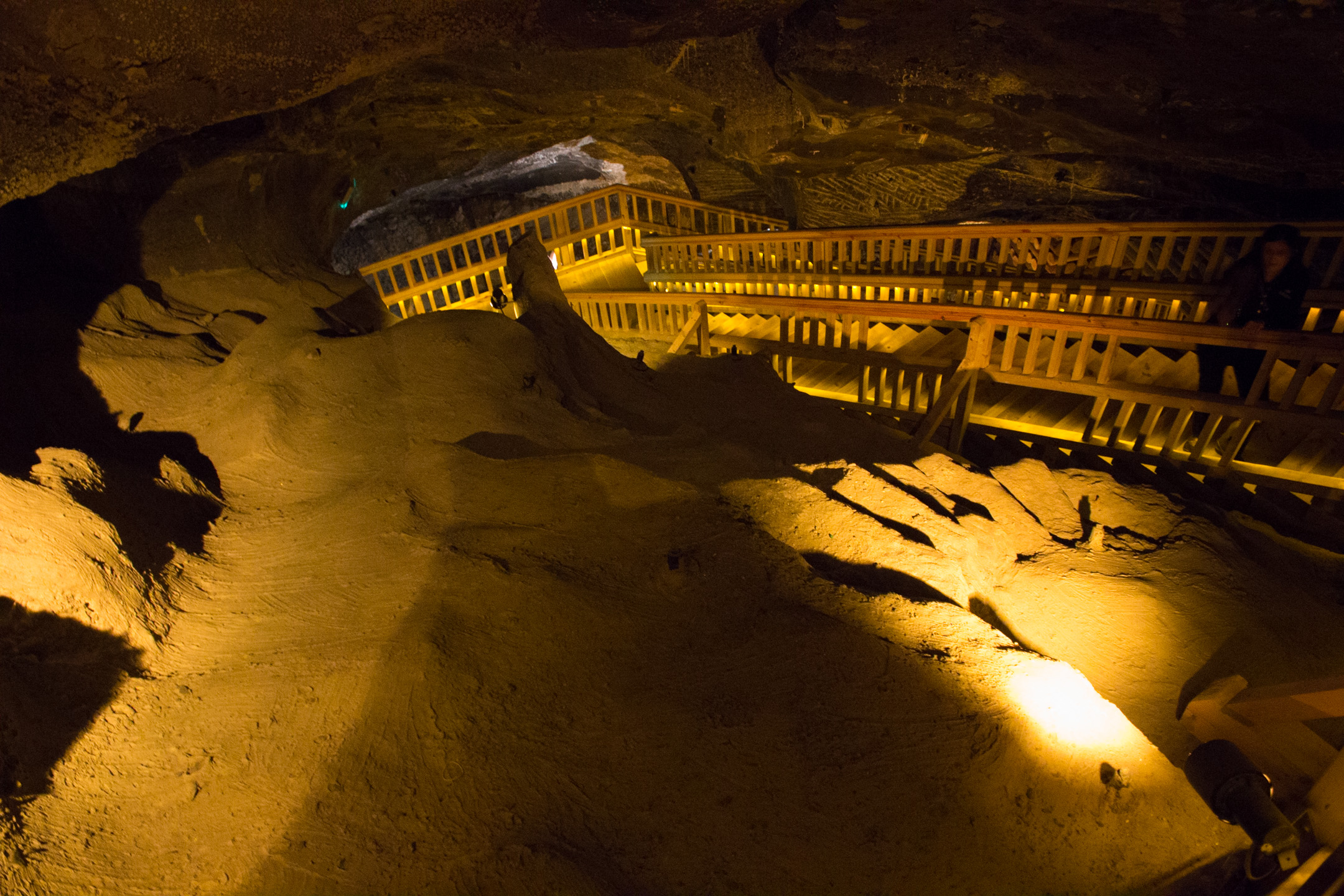
The caves are largely artificial, but that doesn’t mean the shapes are regular – they were dug out by miners trying to find the purest rock salt, and that didn’t form in a regular manner, so some of them have some really weird shapes.
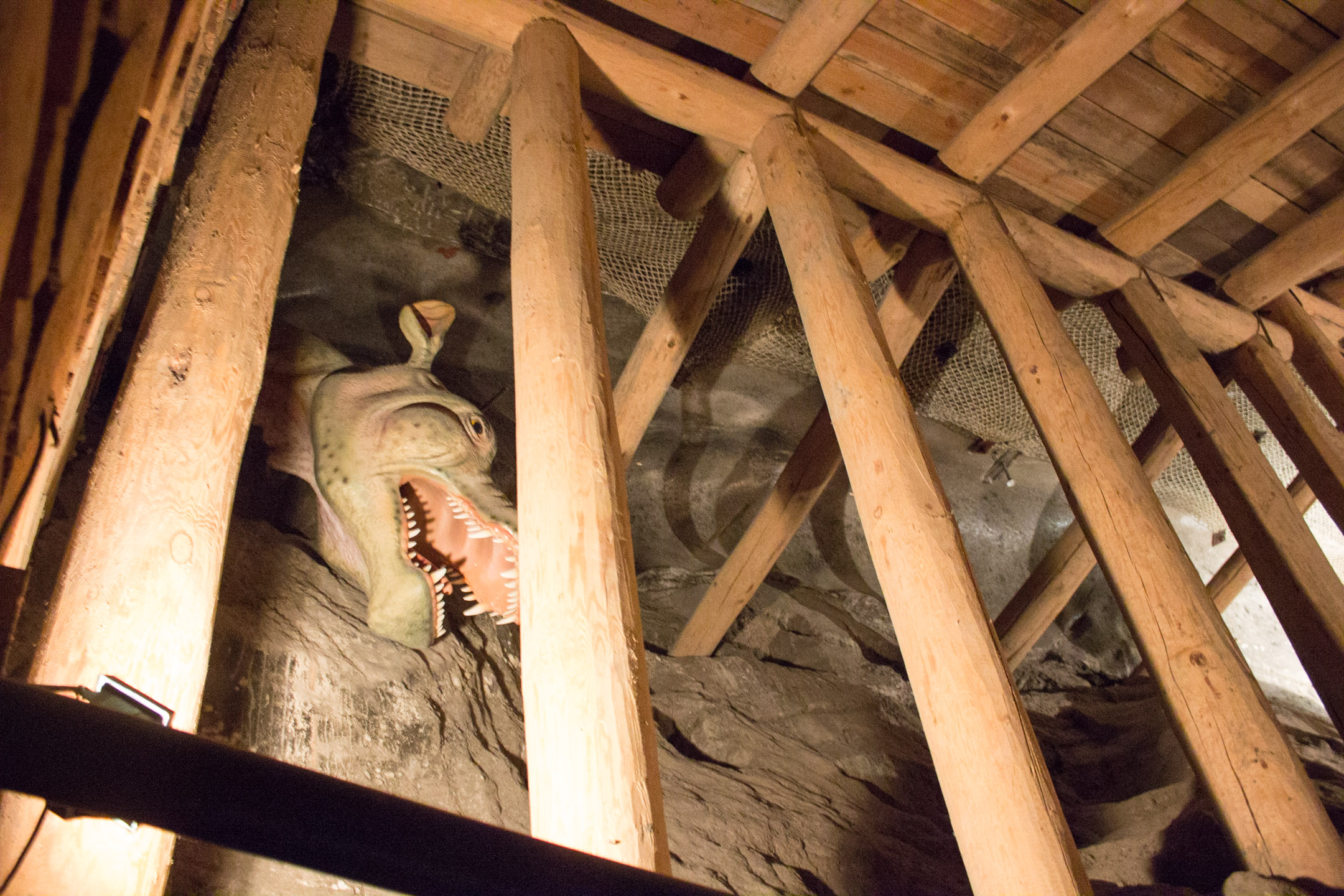
This bit is used by the youth tours; the dinosaur up there is the mine’s mascot.
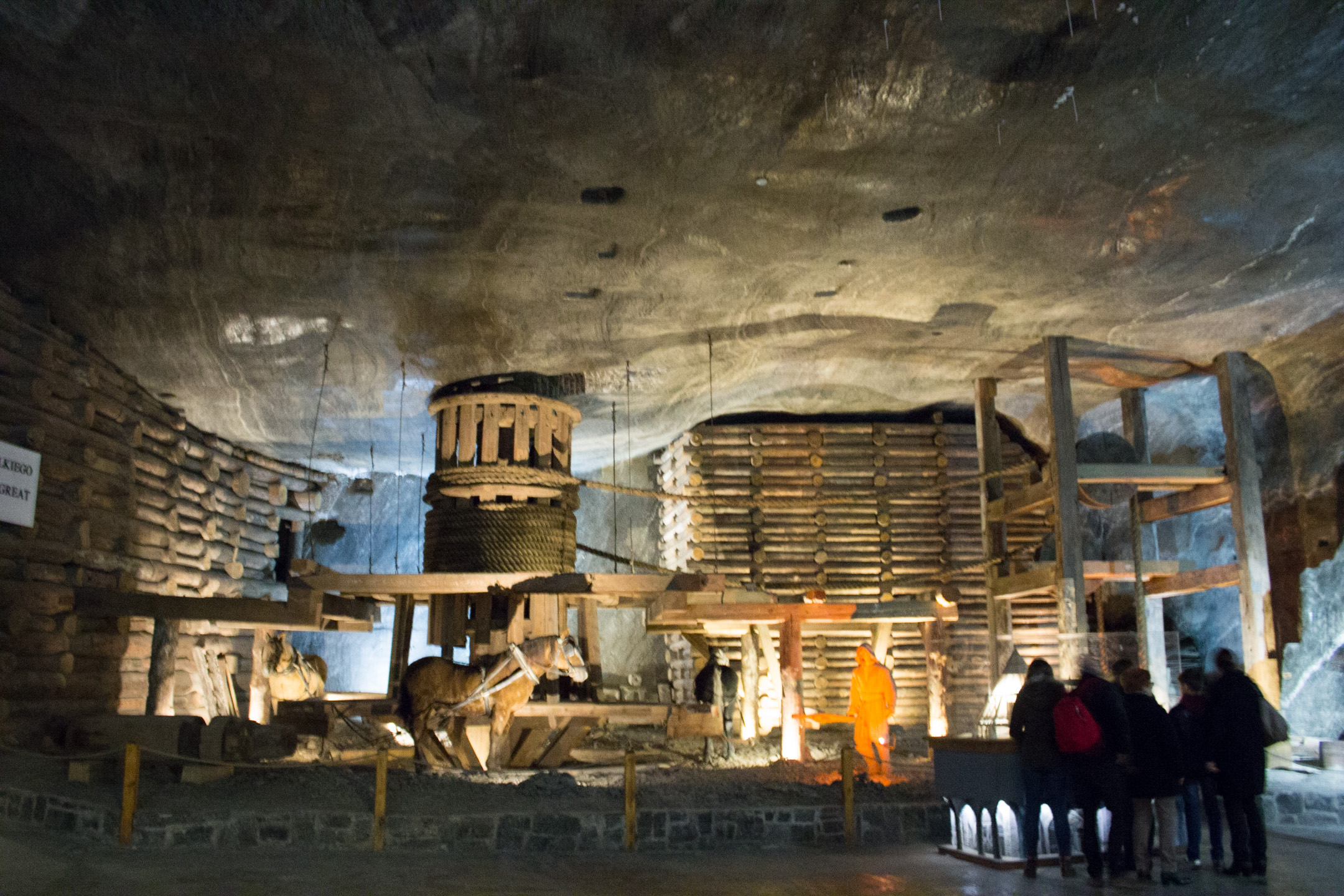
This large chamber was devoted to a full-scale model of some of the old equipment that would’ve been used hundreds of years ago – a rope-pulley system, driven by horses, used to lift massive blocks of salt out of the mine.6

Also in that chamber is a statue of Casimir the Great, one of the heroes of Polish history. He did quite a bit to make the mine as large and impressive as it is today.
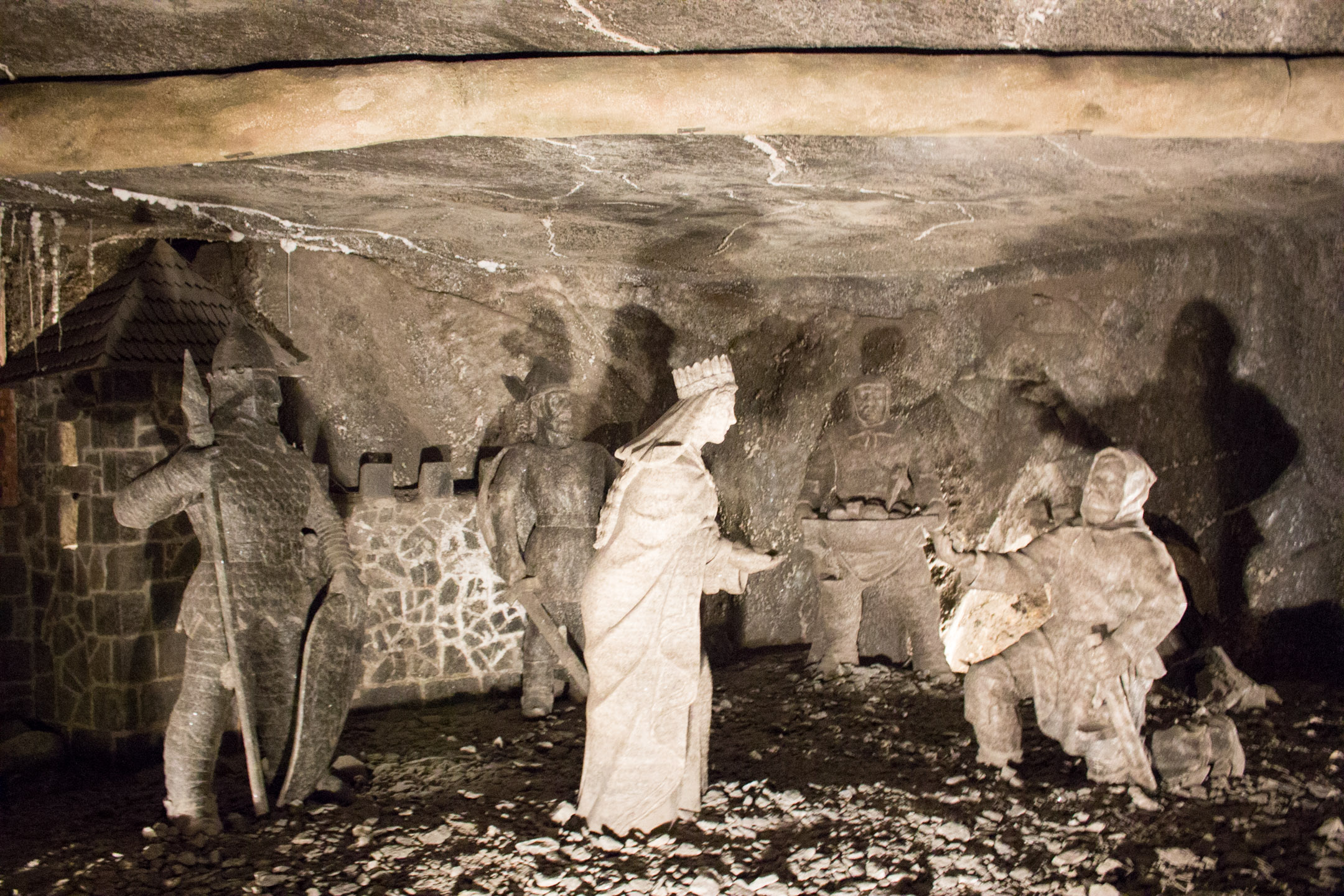
There are actually quite a few statues in the mine. Rock salt is fairly easy to carve, as rock goes, and miners need a break occasionally. Only a couple of the statues were made by professional artists – most were made by miners taking a bit of time from the mining.
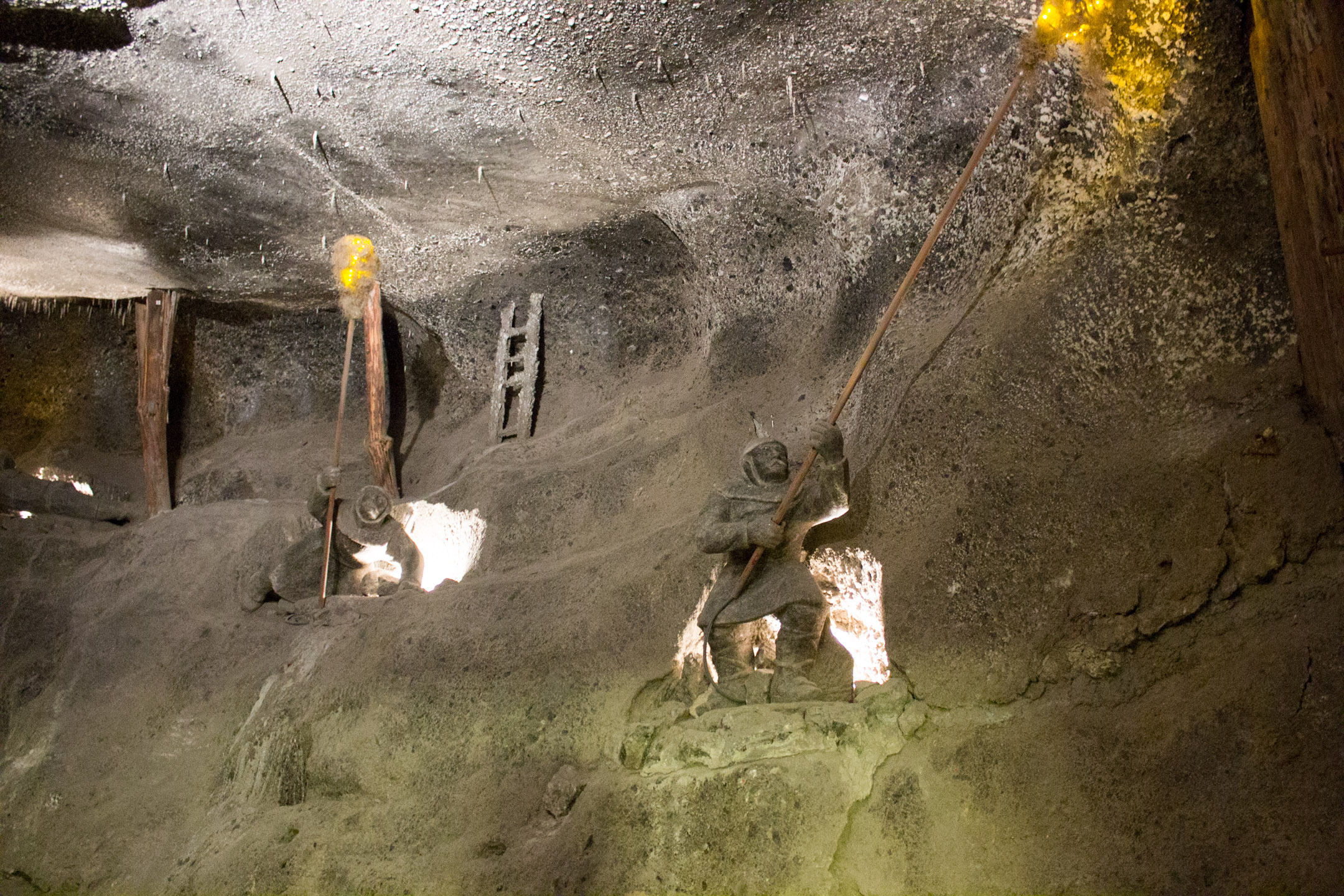
I thought this one was cool. Methane pockets used to be a big problem in the mine, and dealing with them was almost always deadly. Miners would wear armor-like suits and crawl along the floor, below the gas itself, with a lit lantern.7 Occasionally, they’d raise the lantern, on a stick, above their head, igniting the methane. This cave, actually, is the result of a methane explosion.
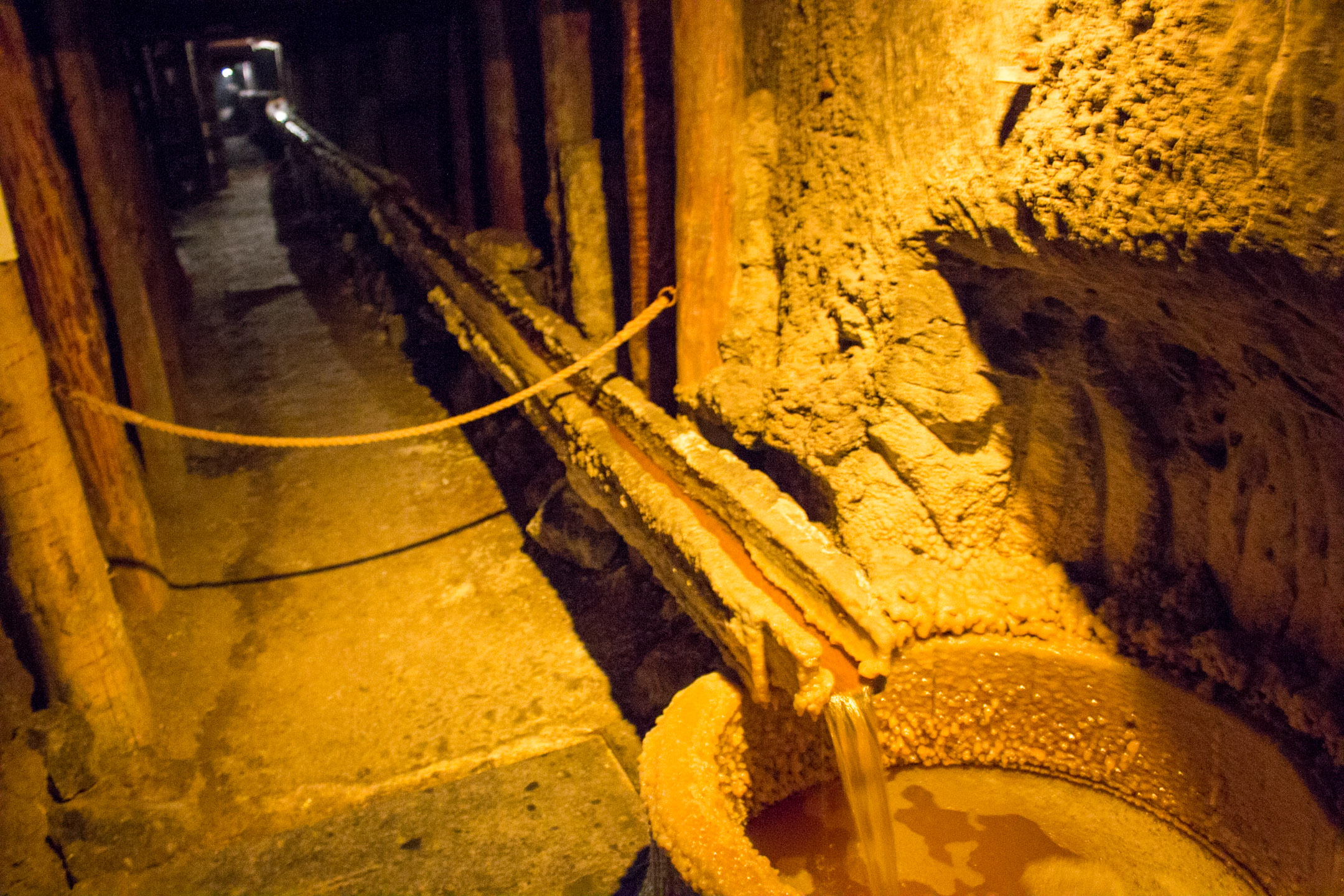
A lot of the salt extraction was actually done by the use of brine – water saturated with salt to the point that it can’t accept any more. Leave it out to dry, and you wind up with all the salt, neatly piled.
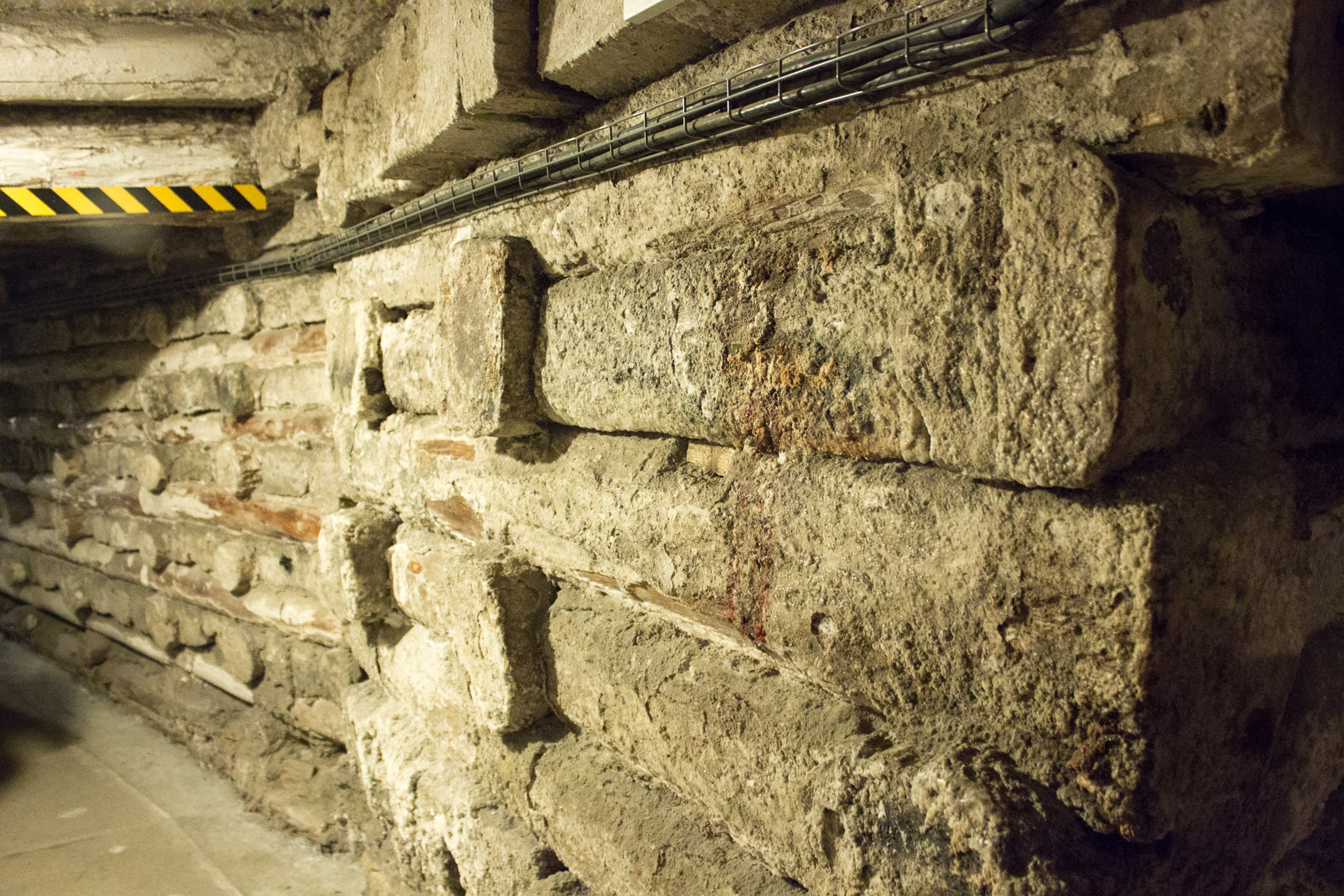
The presence of that much brine – and it occurs naturally, as well, because if you leave water alone in a salt mine it’ll turn itself into brine – means that the air is actually fairly humid, and saltier than a day at the seaside. This means that any condensation that occurs also deposits salt, and over time that salt builds up, to the point that some of the older woodwork has a layer of rock salt built up over the outside.8

If I had to guess, I’d say that this was in Level 2, far above the natural flooding level. Instead, it’s an artificial lake,9 filled with brine. The salinity is at maximum – if you look closely, you can actually see strange things floating on the surface10 – that’s salt, condensing back out of the water due to the high density within the water. It’s saline enough that a team of divers tried and failed to reach the bottom – wearing an extra 60 kilograms of weights each. Or, as I put it, “you can pretty much walk across the lake, if you wanted to.”

One of the other things the mine has a lot of is chapels. Poland has been a very Catholic country for hundreds of years – it still is, in fact – and people wanted to pray. As the mine expanded, chapels were moved, or new ones were built, which led to the place having quite a few.
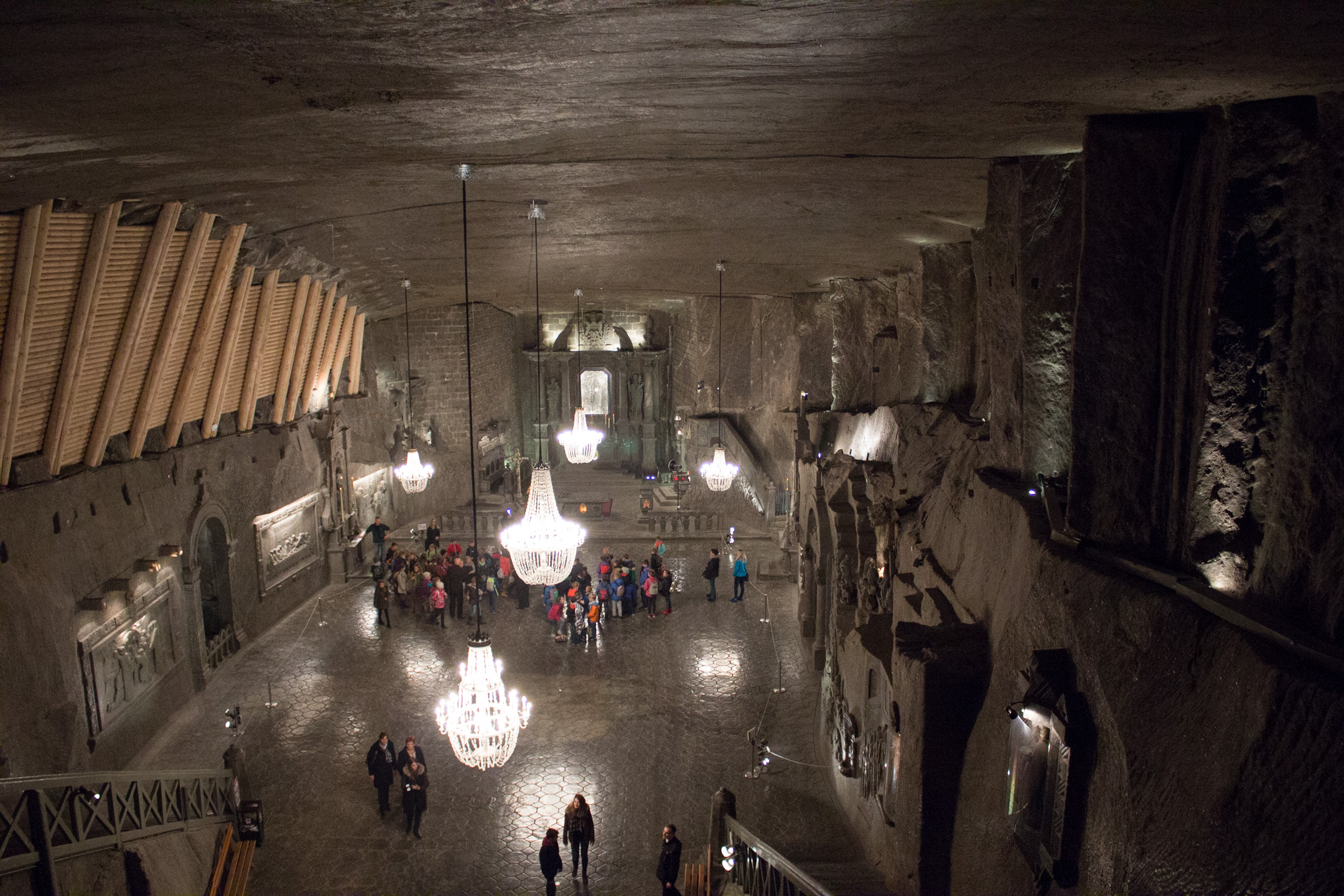
The most impressive, of course, is St. Kinga’s Chapel – a massive cavern, carved and decorated by a series of artists.
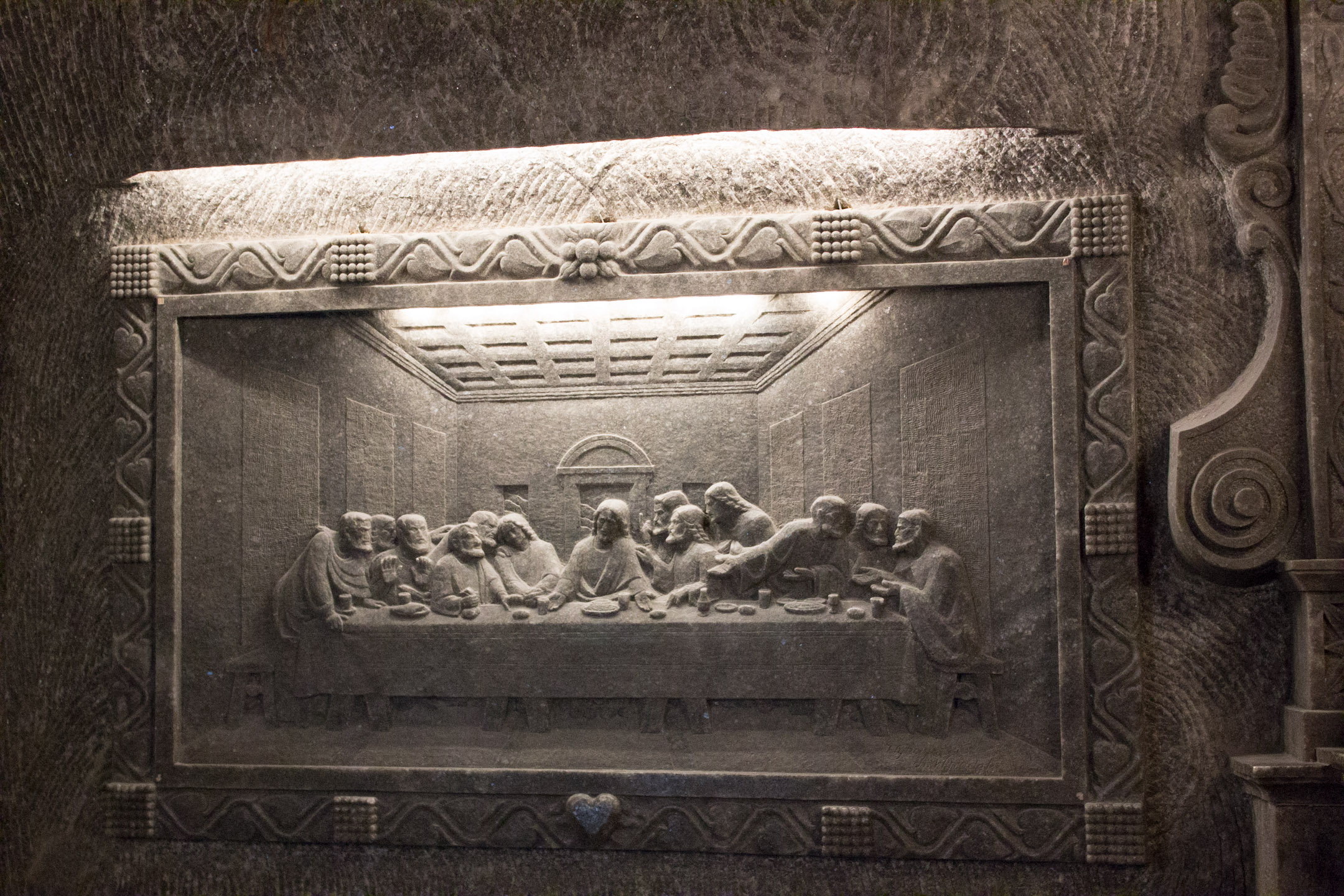
My favorite of the carvings in there was this – a reproduction of the Last Supper.

But, personally, my favorite chamber was this one. It’s massive, larger than any of the cathedrals I’ve visited, but it absolutely captures that same feeling – the mind-boggling sense of scale. It’s a “look what man hath wrought” sort of moment – a testament to the astounding capabilities of mankind.

The whole mine is like that, in fact – massive spaces, carved out of the ground by industry, and now turned into a beautiful space for visitors to experience. Eat your heart out, Moria.

The final chamber of the tour includes a few museum-type display cases, as well as an elevator up to the rock shelf above.11 It also had a couple gift shops, and wifi. Because, y’know, when you’re 150 meters underground you’re not exactly going to get cell service.
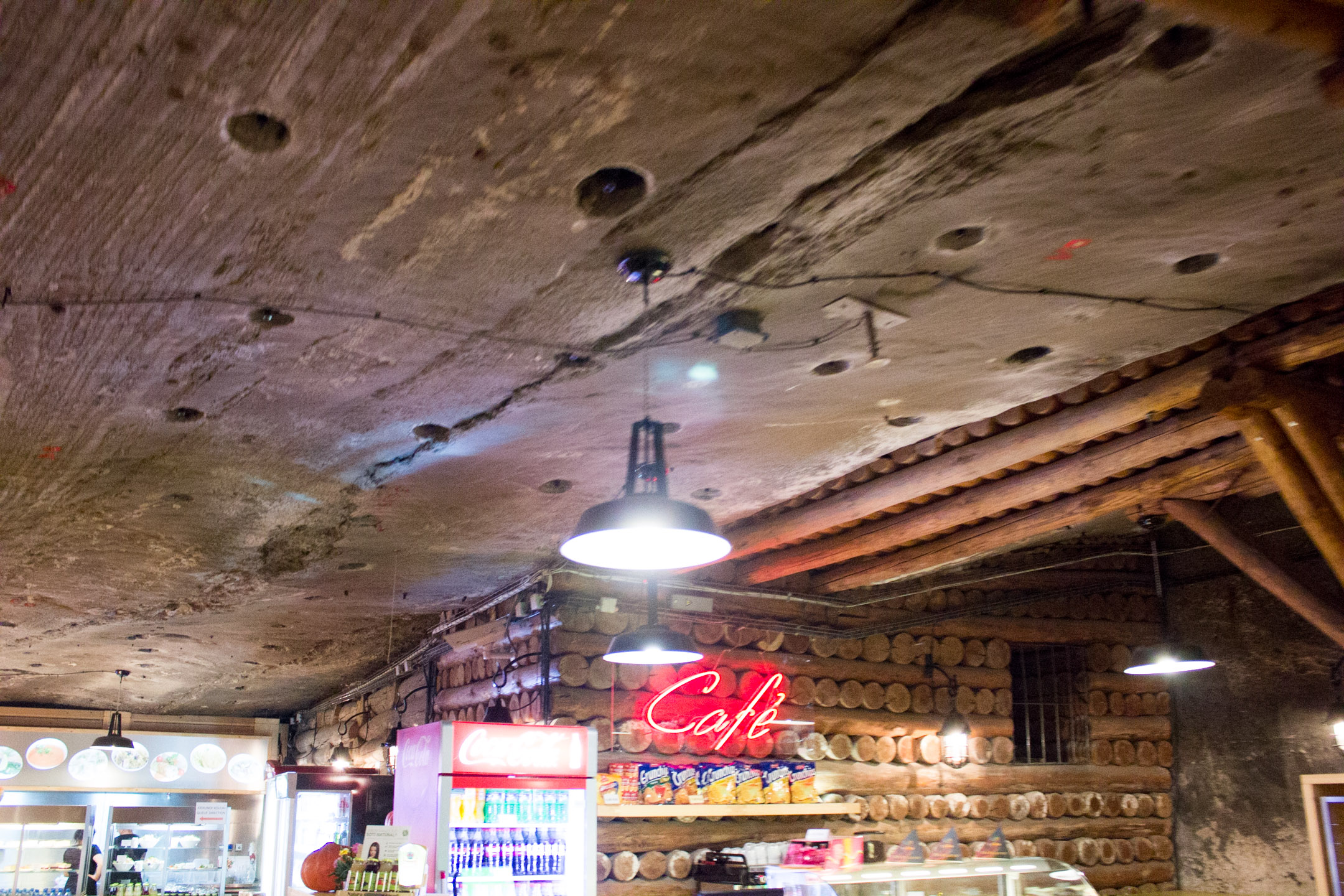
There’s also a cafe on that level, which I found a delightful expression of capitalism.
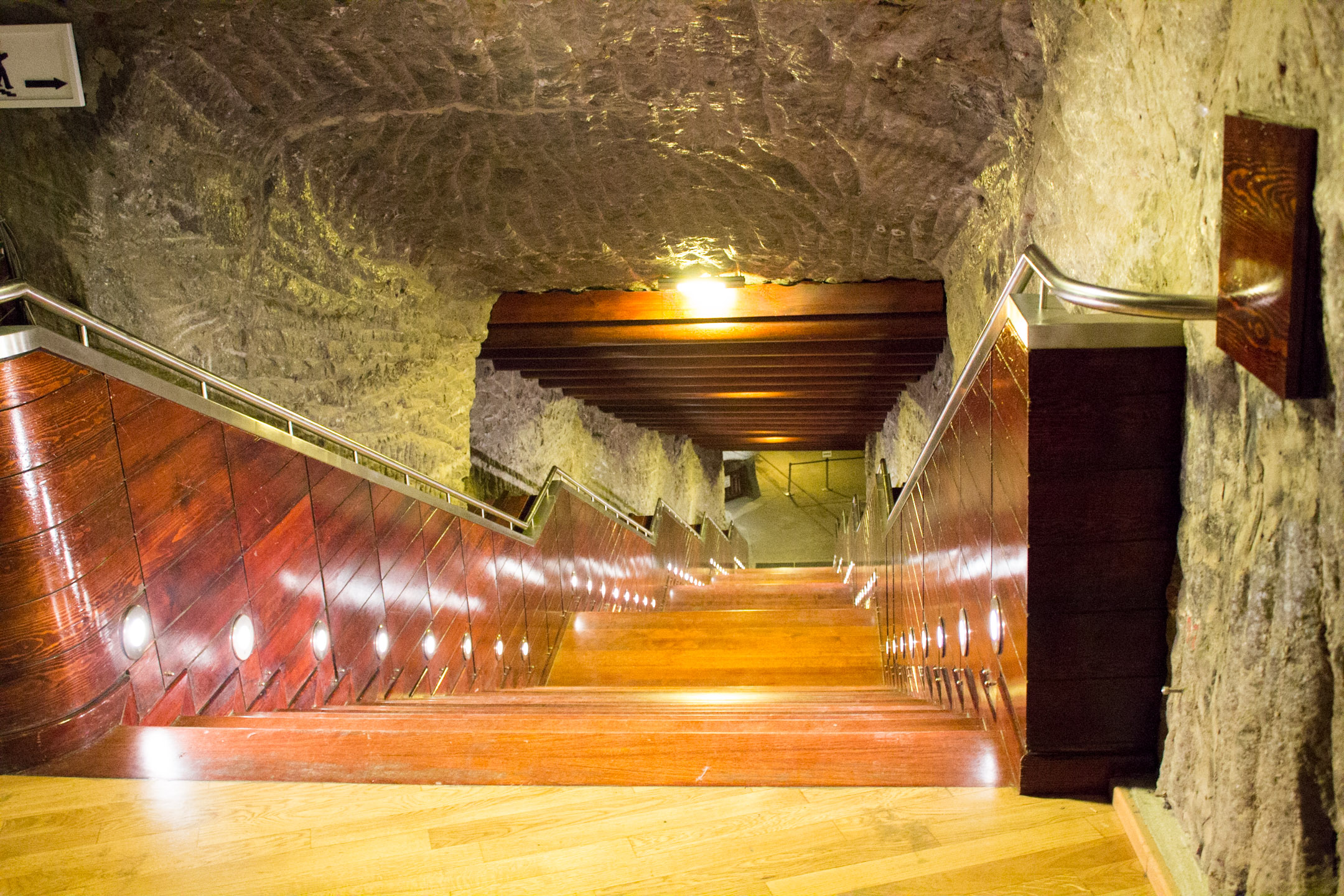
That end section was weird – a mix of natural stone surfaces and luxurious woodwork; it felt like something out of Lord of the Rings or a Bond film.12
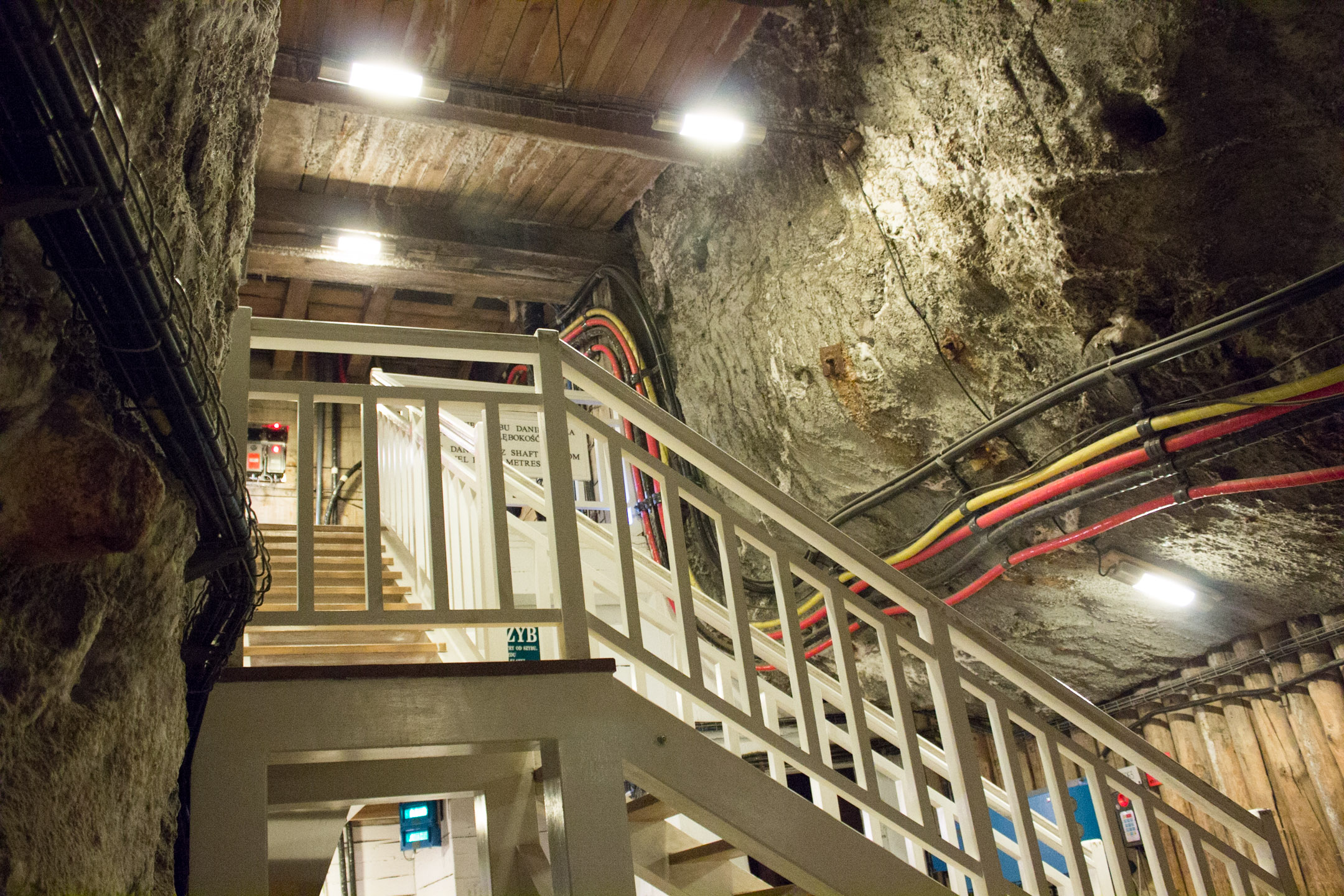
Exiting was a strange experience – rather than making us climb a couple hundred meters of stairs, they put us all in the elevator. Of course, the elevator was made for miners, so it’s not exactly fancy – it’s four stories, nine people on each level, and about as spacious as the average tin of sardines. It was remarkably quick, though, so that was nice, at least.
My ending advice? If you’re ever in Poland, absolutely check out the salt mine. It’s very cool.
- I also didn’t want to have two very long posts in a row, because that’s a lot of typing. ↩
- It’s not a functional mine anymore, but it was until 1996. ↩
- There are, if I’m remembering correctly, nine levels, but the mine is only open to Level 3 or so – once you get down towards the bottom, it’s flooded, and tourists get all grumpy if you expect them to breathe underwater. ↩
- If you were really determined you could get past the closed door, but it gets really dark really fast after that, so I wouldn’t recommend it. ↩
- Technically speaking I’m sure it’s something like 1% of the mine, so ‘throughout’ is a strong word, but they’ve done a good job of putting locked doors in front of all the rest of it. Just imagine the lawsuits that happened before they did that… ↩
- For reference on the economics, a block of salt my size was worth enough to buy an entire village, people included. ↩
- I knew about this beforehand, thanks to Discworld, but it was cool to find out that the stuff described in the book is actually fairly accurate to the real world. ↩
- Interestingly, most of the wood has a fairly high salt content internally, built up over time in a similar manner, that helps it to support the weight of the stone above. ↩
- I think they said it’s something like 30 meters deep? ↩
- You can also see the bottom, which I think is quite cool. ↩
- I’m still quite sad I wasn’t able to go up in that elevator, but we were on a schedule. ↩
-
Translation: I spent the final few minutes of the tour wondering how much it would cost to buy a salt mine somewhere and convert it into the weirdest mansion ever.
Listen, you have your life goals, I have mine. ↩
